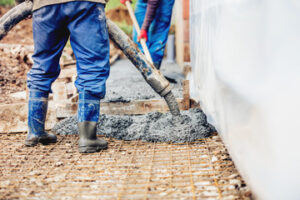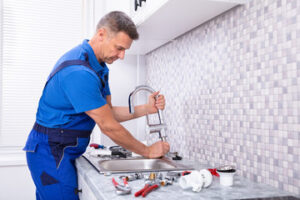Link Juice is the strength and potential influence of a website’s backlink profile. It is a crucial factor in search engine results pages (SERPs).

The location of links within a page also influences how much link juice is passed. For example, a link embedded in the main body of a post passes more juice than one in a header or footer.
Link building is one of the most important aspects of a website’s seo. It’s a way to drive more organic traffic, which can lead to more conversions and sales. It also helps with SEO by increasing the search engine visibility of a page. Having high-quality links from other websites is an indicator of authority, and it can help improve a webpage’s rank in the search results.
However, it’s important to note that link building isn’t a quick fix for improving your seo. Instead, it should be a part of your overall strategy and be conducted in a way that is natural for your business. For example, don’t try to buy lots of links from shady sites. This will only hurt your rankings in the long run. Instead, focus on building links from other websites that are relevant to your business.
It can help establish partnerships within your industry – if you’re creating helpful content, other websites may want to feature you in their content. It can also be a good way to meet other content creators and experts in your industry, which can lead to future opportunities for collaboration.
Another key aspect of a successful link building campaign is knowing your audience. Having an understanding of the demographics of your target audience will help you decide what types of content to create and where to promote it. Knowing your audience’s needs will also ensure that your content is on topic and will get the most engagement from your audience.
Although it’s not the only factor, linking to relevant and authoritative websites is a surefire way to boost your website’s ranking. In addition to improving your search engine optimization, it will also help you gain more credibility and trust from potential customers. To succeed in the competitive online world, you must take a holistic approach to your SEO strategy and follow a variety of best practices. For example, it’s crucial to keep in mind that Google’s evaluation of quality content has evolved beyond just links. This update has helped to curb low-quality spammy content and has paved the way for a new age of search.
Link analysis
When a page on one website links to another, it passes some of its authority to the linked page. This is called link juice and it can help boost the ranking of the linking page in search engine results pages. There are several factors that influence how much link juice is passed, including the authority of the linking page and the relevance of the content. The position of the link in the text also plays a role. Links that are embedded within the content will pass more link juice than those buried in a footer or sidebar.
While many SEOs focus on acquiring backlinks from high-quality sites, it is equally important to optimize internal links. Effective internal linking improves site structure, enhances crawling and indexing efficiency, and distributes link equity to relevant pages. A few key factors to consider when evaluating internal links include the number of outbound links, the anchor text used, and the number of nofollow links.
Backlinks are essential for any seo campaign. They are a signal to search engines that your website is popular and credible, which will in turn boost its rankings. However, there are some types of backlinks that are considered bad for SEO, such as spammy links and those from irrelevant websites.
Link analysis is an important part of link building, and there are several free tools available that can help you analyze your links. These tools can help you identify the types of backlinks that are most beneficial to your business and how to improve them. The best tools provide you with detailed reports of all your links, which will help you increase your search engine optimization efforts.
Using a tool such as Google Search Console can help you understand how your website is performing in search. It provides you with an overview of your site’s search performance, and can identify errors that are affecting your rankings. Additionally, it allows you to monitor changes in your keyword performance over time. It is important to note that the tools offered by these services are not perfect, but they can give you a good idea of how well your website is performing in search.
Link distribution
Link distribution is an important factor in search engine optimization. When a high-quality website links to another, it passes some of its authority to the other site, improving the ranking of that page in SERPs. However, the amount of link juice passed varies depending on several factors, including the authority of the linking page, the relevance of the linked page, and the number of outbound links on the page. The more outbound links a page has, the less link juice it passes to each of those pages.
To maximize the effectiveness of a website, it is critical to distribute link juice in a way that ensures all of its pages receive the same amount of traffic and exposure. This can be achieved by creating a natural link structure that allows link juice to flow naturally throughout the website. In addition, the structure should adhere to Google’s guidelines for linking and avoid manipulative practices like link schemes and excessive reciprocal links.
Several things affect the amount of link juice a webpage passes, including its own PageRank, the number of outbound links on the page, and the quality of those outbound links. The more valuable a link is, the more PageRank it will pass to the linked page. The PageRank of a page is also affected by the number and type of links on that page, as well as its domain authority. In general, links from a higher-quality domain (such as.gov or.edu) pass more PageRank than those from a lower-quality domain.
In the past, SEO practitioners used nofollow attributes to manipulate link juice by focusing it on specific pages. This practice was known as “page rank sculpting.” Since then, Google’s algorithm has become stricter, making it harder to manipulate the flow of link juice. Today, it is better to focus on acquiring high-quality backlinks and developing a natural link profile that adheres to Google’s guidelines.
Internal links are also essential for distributing link juice across a website. They allow you to connect relevant content and improve navigation and user experience. Moreover, they can help you boost your affiliate marketing efforts by directing more visitors to your offers.
Link management
A link management strategy is important for seo because it allows website owners to pass on link juice to the pages they want to rank higher in search engine results pages (SERPs). A page that receives a high number of links and has a high domain authority will rank higher than a page with few or no links. The amount of link juice a page passes on to another depends on the number of links and the quality of those links.
One way to build link juice is by obtaining high-quality backlinks from reputable websites. These links serve as votes of confidence and help improve a site’s SEO performance. However, it’s important to remember that not all links are created equal. Generally, links embedded in the content body carry more weight than those in the footer or sidebar, as they are considered more contextually relevant and offer value to users.
Link juice can also be passed on through internal links, which are hyperlinks that connect different pages on the same website. This can be a useful strategy for websites that have many pages and want to boost their SEO. Internal linking also helps with navigation and enables webmasters to connect relevant content.
While it’s important to get high-quality backlinks, it’s equally important to optimize your internal links. You can do this by using link-building tools, such as LinkStorm. These tools use semantic analysis to find internal link opportunities and can connect similar pages in minutes.
There are three main ways to distribute link juice: building external links, internal linking, and redirects. Traditionally, website owners used “DoFollow” and “NoFollow” tags to sculpt the flow of link juice by funneling it to the most important sites and ignoring the rest. However, Google has changed the interpretation of these tags, and this method is no longer effective. If you want to send link juice to a specific page, it’s best to do so through an internal linking strategy. This will ensure that your page is getting the maximum amount of traffic possible.


